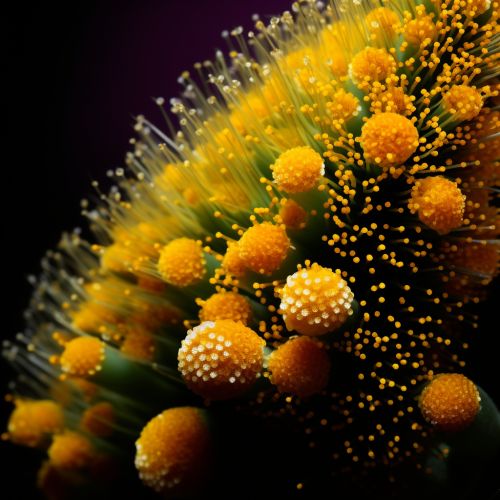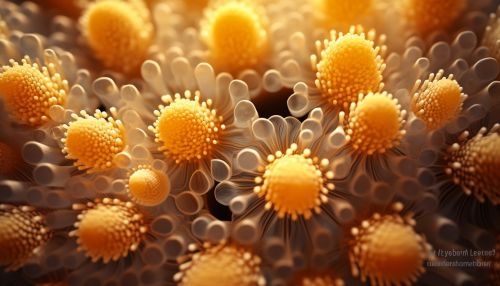Palynology
Introduction
Palynology is the scientific study of pollen, spores, and similar microscopic organic particles. This discipline is a branch of Earth Sciences and Biology, and it has applications in various fields such as Botany, Geology, Archaeology, and Forensic Science. The term "palynology" was first coined by Hyde and Williams in 1944, derived from the Greek words "paluno" meaning to sprinkle and "logos" meaning study.


History
The history of palynology dates back to the 19th century when scientists first began to study pollen and spores. However, it was not until the mid-20th century that palynology was recognized as a distinct scientific discipline. The development of the microscope played a crucial role in the advancement of palynology, allowing scientists to examine these microscopic particles in detail.
Pollen and Spores
Pollen and spores are the primary subjects of study in palynology. Pollen is a powdery substance produced by the anthers of seed-bearing plants, while spores are reproductive units produced by non-flowering plants, fungi, and some bacteria.
Pollen
Pollen grains are microscopic particles that are produced by the anthers of flowering plants. They are crucial for plant reproduction as they carry the male genetic material needed to fertilize the female ovules. Pollen grains vary greatly in size, shape, and surface structure, and these characteristics are often used by palynologists to identify different plant species.
Spores
Spores are reproductive units produced by non-flowering plants such as ferns and mosses, as well as some bacteria and fungi. Like pollen grains, spores also vary greatly in size, shape, and surface structure. The study of spores can provide valuable information about the plant species that produced them and the environment in which they lived.
Methods and Techniques
Palynology employs a variety of methods and techniques to study pollen and spores. These include microscopy, chemical analysis, and statistical analysis. The choice of method depends on the research question and the type of sample being studied.
Microscopy
Microscopy is the primary tool used in palynology. It allows scientists to examine the microscopic details of pollen and spores, such as their size, shape, and surface structure. Different types of microscopes, including light microscopes and electron microscopes, are used depending on the level of detail required.
Chemical Analysis
Chemical analysis is often used in palynology to determine the composition of pollen and spores. This can provide valuable information about the plant species that produced them and the environment in which they lived. Techniques used for chemical analysis include gas chromatography, mass spectrometry, and infrared spectroscopy.
Statistical Analysis
Statistical analysis is used in palynology to interpret the data obtained from microscopy and chemical analysis. It can help to identify patterns and trends in the data, and to make predictions about future changes in plant populations and environments.
Applications
Palynology has a wide range of applications in various fields. These include botany, geology, archaeology, and forensic science.
Botany
In botany, palynology is used to study plant reproduction and evolution. By examining the pollen and spores produced by different plant species, scientists can gain insights into their reproductive strategies and evolutionary history.
Geology
In geology, palynology is used to study past climates and environments. Pollen and spores preserved in sedimentary rocks can provide valuable information about the vegetation and climate of the past.
Archaeology
In archaeology, palynology is used to study past human activities. Pollen and spores found in archaeological sites can provide clues about the diet, agriculture, and environment of ancient civilizations.
Forensic Science
In forensic science, palynology is used to help solve crimes. Pollen and spores found at a crime scene can provide valuable evidence, helping to determine the location and time of the crime.
